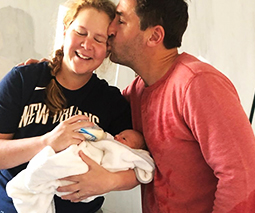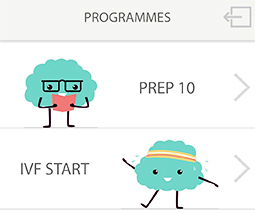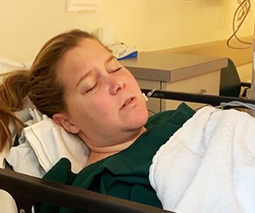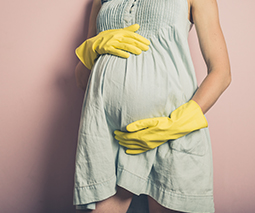Considering IVF? We have some great news

Good news for anyone embarking on an IVF journey: the success rate for in vitro fertilisation has improved significantly over the last decade.
A new report released on Monday by medical researchers at the University of NSW has revealed that the live birth rate for every IVF cycle in women using their own eggs has increased by 18 percent, with even better improvements in older women.
Professor Georgina Chambers, the report’s lead author, said that in women aged between 35-39, “the live birth rate per cycle has increased from 19 percent to 23 percent.”
That’s a 20 percent relative increase in the success rate!
“And in those aged 40-44,” continued Chambers, “the live birth rate has increased to 10 percent, representing a 27 percent increase in success rates over the last 10 years.”
Reasons for success
The findings, taken from data from all 95 IVF clinics operating in Australia and New Zealand, is reflective of breakthroughs in technology and the dedication of patients.
“The improved success rates are due … to advancements in laboratory techniques and improvements in the overall management of couples experiencing infertility, such as lifestyle interventions, improved diagnostic capabilities, and in some cases, surgery prior to IVF,” Dr Petra Wale, a senior embryologist and Vice President of the Fertility Society of Australia and New Zealand said in a press release.
“Every aspect of an IVF cycle – from ovarian stimulation protocols, the culture media that embryos are grown in, to the selection of the best embryo at optimal stage of development– have seen incremental improvements over the last decade.”

Frozen cycles more successful than fresh
The biggest improvements happened in live birth rates in frozen embryo transfers, with a 50 percent increase in the live birth rate per frozen embryo transfer between 2009 and 2019.
This has been due, in part, to the improvements around rapid freezing techniques – called vitrification – that has allowed doctors to cryopreserve embryos more effectively than older freezing methods.
Twins and triplets rates down
The proportion of twins and triplets born through IVF in Australia and New Zealand has also decreased dramatically, from 7.9 percent in 2010 to 2.9 percent in 2019. This is another decrease from last year’s record low, and one of the lowest rates worldwide.
This improvement is due to IVF cycles where only a single embryo is transferred, up from 70 percent in 2010 to 92 percent in 2019, making Australia and New Zealand among the safest countries in the world to have IVF.
If you’re unsure about whether IVF might be right for you, you can visit the YourIVFSuccess.com.au website. Funded by the Australian Government, it enables patients to estimate their chances of successfully having a baby using IVF, based on their individual characteristics. It also includes a searchable database of the success rates for all accredited IVF clinics in Australia.
If you’re still trying …
We know that even when IVF results in a baby, it is one of the most difficult journeys any couple can undertake and that while this report is great news, it’s not going to be good news for everyone.
An increase in success rates doesn’t automatically mean every single IVF cycle has been, or will be, successful. So if your attempts have not been successful, or you’re still trying, or you’ve decided to take another path altogether … we see you.








